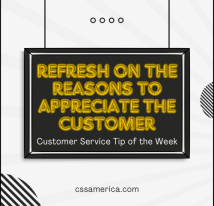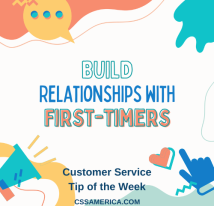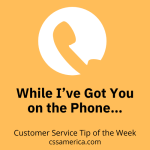
Okay – you got me. This tip doesn’t JUST apply to Millennials or JUST their favorite words, but I’m going to use that title as a jumping off point.
In recent research conducted by Prosper-Insights & Analytics, the 5 key terms that Millennials most frequently use to describe excellent customer service are: Helpful, Quick, Returns, Easy, (Fix/Resolve) Problems.
Essentially this is how Millennials define excellent customer service. There are 2 ways we’re going to suggest you use this information.
Self-Analysis
The first is self-analysis (for you or your organization):
- Are you helpful? Yes, you may provide facts or information, but do you help the customer address their goal or need? This is second level customer service – going beyond the response you provide to the result the customer desires.
- Is your service quick? Do you respond to the e-mails, calls, chats, needs, and issues expeditiously, and do you ask for the customer’s timeframes so that you know how they define “Quick?”
- How do you handle returns? Is it as simple for them to return as to buy; are the employee attitudes as pleasant when customers return and want the refund as they are when customers buy and make the payment?
- Do you make it easy for them to do business with you? For them to understand their responsibilities v. the company’s? For the customer to communicate with you?
- Finally, what do you do when things go wrong? How are you at fixing/resolving problems? With many customers, your response to the issue tells them far more about your level of customer service than your response to the sale.
Phrasing with Customers
The second way we suggest that you use this information is to incorporate it into your daily phrasing with customers – particularly the words helpful, quick, easy. “I want to help you. We want to make this a quick and easy process for you. How else can I help? What’s the easiest way to keep in touch with you?”
When customers tell you what’s important, use that information to improve. And use those words in your customer conversations.
Signup for FREE Tips! Contact Us More Resources for You Visit Our Home Page






















